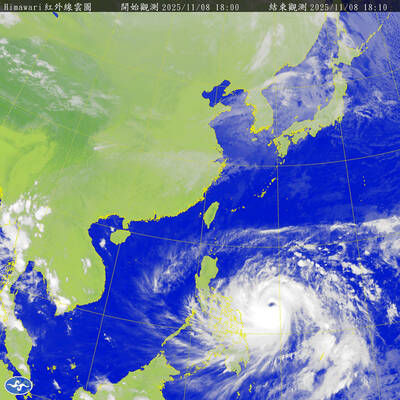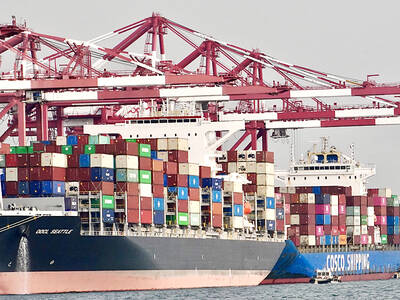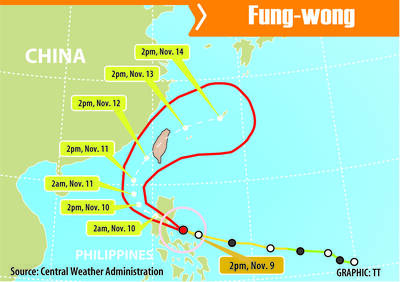Beijing yesterday hailed Britain’s announcement that it would seek to join a Chinese-led development bank, after Washington voiced caution about the move.
The US$50 billion Asian Infrastructure Investment Bank (AIIB) was launched in Beijing last year and was seen as a rival to the Western-dominated World Bank and Asian Development Bank. The US has questioned whether it will have sufficiently high standards on governance and environmental and social safeguards.
However, Britain on Thursday said it plans to become the first major Western country to join the bank, in a move to bolster relations with China.
“We welcome this decision made by the UK side,” Chinese Ministry of Foreign Affairs spokesman Hong Lei (洪磊) told reporters at a regular briefing.
He said that “if all goes well,” Britain would become a prospective member of the bank by the end of the month.
“The AIIB will complement the existing development banks,” Hong said.
“[It] will learn from the good practice of the existing multilateral development banks and meanwhile take a detour from their path so as to reduce costs and increase operational efficiency,” he added.
British Chancellor of the Exchequer George Osborne said on Thursday that “joining the AIIB at the founding stage will create an unrivaled opportunity for the UK and Asia to invest and grow together.”
London’s move drew a cautious response from Washington, a rare note of discord in their “special relationship,” which follows criticism from the US about Britain’s cuts to defense spending.
China and 20 other countries signed a memorandum of understanding to establish the Beijing-headquartered bank in October.
“We believe any new multilateral institution should incorporate the high standards of the World Bank and the regional development banks,” US National Security Council spokesman Patrick Ventrell said.
“Based on many discussions, we have concerns about whether the AIIB will meet these high standards, particularly related to governance, and environmental and social safeguards.”
The bank has support from countries including India, Singapore, Malaysia, Cambodia, Pakistan, the Philippines, Uzbekistan and Vietnam.
China’s official Xinhua news agency rapped the US for its skepticism, writing in a commentary yesterday that Washington “exhibited nothing but a childish paranoia towards China.”
“It seems that the US government needs to be reminded that bias and a deep-rooted strategic distrust towards China are by no means helpful in forging a healthy relationship with the country,” Xinhua wrote.
“It’s imperative for Washington to change its mindset,” it said.
World Bank president Jim Yong Kim yesterday also welcomed the setting up of the China-backed bank.
With US interest rates likely to rise later this year, capital flows to emerging markets and low-income countries will face greater challenges over time, Kim told a news conference in Tokyo.
“From the perspective simply of the need for more infrastructure spending, there’s no doubt that from our perspective, we welcome the entry of the Asian Infrastructure Investment Bank,” he said.

The Central Weather Administration (CWA) yesterday said it expected to issue a sea warning for Typhoon Fung-Wong tomorrow, which it said would possibly make landfall near central Taiwan. As of 2am yesterday, Fung-Wong was about 1,760km southeast of Oluanpi (鵝鑾鼻), Taiwan’s southernmost point, moving west-northwest at 26kph. It is forecast to reach Luzon in the northern Philippines by tomorrow, the CWA said. After entering the South China Sea, Typhoon Fung-Wong is likely to turn northward toward Taiwan, CWA forecaster Chang Chun-yao (張峻堯) said, adding that it would likely make landfall near central Taiwan. The CWA expects to issue a land

Taiwan’s exports soared to an all-time high of US$61.8 billion last month, surging 49.7 percent from a year earlier, as the global frenzy for artificial intelligence (AI) applications and new consumer electronics powered shipments of high-tech goods, the Ministry of Finance said yesterday. It was the first time exports had exceeded the US$60 billion mark, fueled by the global boom in AI development that has significantly boosted Taiwanese companies across the international supply chain, Department of Statistics Director-General Beatrice Tsai (蔡美娜) told a media briefing. “There is a consensus among major AI players that the upcycle is still in its early stage,”

The Central Weather Administration (CWA) yesterday said it is expected to issue a sea warning for Typhoon Fung-wong this afternoon and a land warning tomorrow. As of 1pm, the storm was about 1,070km southeast of Oluanpi (鵝鑾鼻), Taiwan’s southernmost point, and was moving west-northwest at 28 to 32kph, according to CWA data. The storm had a radius of 250km, with maximum sustained winds of 173kph and gusts reaching 209kph, the CWA added. The storm is forecast to pass near Luzon in the Philippines before entering the South China Sea and potentially turning northward toward Taiwan, the CWA said. CWA forecaster Chang Chun-yao (張峻堯) said

Japanese Prime Minister Sanae Takaichi yesterday said that China using armed force against Taiwan could constitute a "survival-threatening situation" for Japan, allowing the country to mobilize the Japanese armed forces under its security laws. Takaichi made the remarks during a parliamentary session while responding to a question about whether a "Taiwan contingency" involving a Chinese naval blockade would qualify as a "survival-threatening situation" for Japan, according to a report by Japan’s Asahi Shimbun. "If warships are used and other armed actions are involved, I believe this could constitute a survival-threatening situation," Takaichi was quoted as saying in the report. Under Japan’s security legislation,